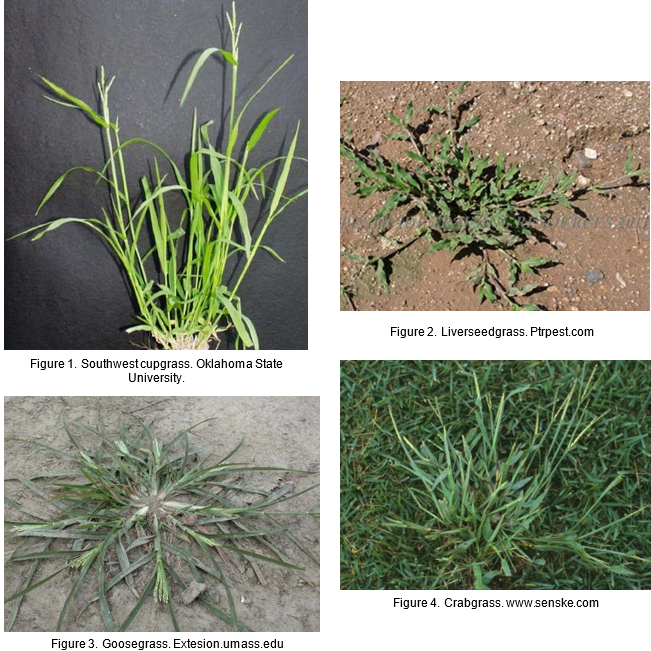 School & Home Integrated Pest Management (IPM) Newsletter – March 2018
School & Home Integrated Pest Management (IPM) Newsletter – March 2018
View this newsletter as a PDF.
Editor: Shujuan (Lucy) Li, lisj@cals.arizona.edu
Authored by Dave Kopec and Kai Umeda.
Spring means warmer weather, whether you are in Flagstaff or Yuma, AZ. Turfgrass weeds that come up from seeds and then die later in the same season are called “annuals”. There are two categories of annual weeds in the desert: “summer” and “winter” annual weeds. Summer annual weeds germinate from seed in late winter or early spring, and then thrive through the summer months, which includes the production of more seeds to come up in future years! Winter weeds in the low desert emerge in the late summer through winter during the cooler season.
At sites where the same species of annual weeds come up year after year because of the accumulation of thousands or millions of seeds in the soil, they can be prevented from becoming established at all by using a preemergence herbicide, rather than to treat them after they come up with a postemergence weed control product.
Weed seed germination occurs below the soil surface and then the first visible leaf or shoot emerges through the soil. Preemergence herbicides stop the seedling root from growing after germination or prevent the emergence of the shoot that you “don’t see”.
For preemergence herbicides to be effective, the product has to be applied evenly across the surface of the turf and then immediately “irrigated in”. Most preemergence herbicides must be watered in very soon after application, so they can bind to the soil particles so that the roots and shoots of the germinating seedling can be exposed to the herbicide. The product label will specify that adequate rainfall or sprinkler irrigation should occur within a month or so to ensure the herbicide is "activated". Otherwise, exposure on the soil surface to sunlight will result in breakdown of the herbicide and reduced weed control efficacy.
There are several active ingredients that are often sold under a variety of branded product names. Commonly sold active ingredients of preemergence herbicides include the following: trifluralin, benefin, pendimethalin, oryzalin, prodiamine, dithiopyr, metolachlor, dimethenamid, and oxadiazon.
Summer annual grassy weeds include (at low desert locations) southwest cupgrass (Figure 1), liverseedgrass (Figure 2), stinkgrass, goosegrass (Figure 3) and sometimes crabgrass (Figure 4). At higher elevation locations crabgrass is a major summer annual grass weed. The above active ingredients are predominately active against grassy weeds.

Small-seeded broadleaved annual weeds such as spurge and purslane can be controlled by the same preemergence herbicides used against the grass weeds. Herbicide products containing the active ingredient, isoxaben can control additional broadleaved weeds with preemergence applications to the soil.
Preemergence weed control products should be applied when the soil temperature is 50-55 °F or so. Normally, preemergence herbicides should be applied by the end of February/early March in Tucson and Phoenix, and by early to mid-February in Yuma. Likewise, the similar temperatures occur in mid-May in Flagstaff. Soil temperatures can be found at the following web site http://cals.arizona.edu/AZMET.
Some preemergence herbicides are also formulated with the active ingredient attached to a granular fertilizer. This can offer some convenience since a fertilizer application can be made when applying suitable pre-emergence weed control agent. These types of products are often referred to as “weed and feed” products.
Active ingredients and product references included are provided for technical/educational purposes and examples only. No recommendations or exclusions are intended, or implied.
Also see: http://wssa.net/wssa/weed/articles/wssa-choosing-herbicides/
Contact: Dave Kopec, Turf Specialist. Email: dkopec@ag.arizona.edu
Kai Umeda, Extension Agent, Turf. Email: kumeda@cals.arizona.edu